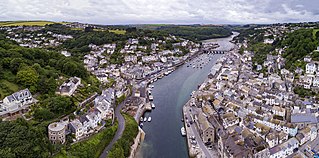
Looe is a coastal town and civil parish in south-east Cornwall, England, United Kingdom, with a population of 5,280 at the 2011 census.
Rillaton Barrow is a Bronze Age round barrow in Cornwall, UK. The site is on the eastern flank of Bodmin Moor in the parish of Linkinhorne about four miles (6 km) north of Liskeard.
Trelawny or Trelawney may refer to:

Lanreath is a civil parish and a village in southeast Cornwall, England, United Kingdom. The village is situated five miles (8 km) west-northwest of Looe. The name Lanreath means 'church (Lann) of Raydhogh' and it has been known variously as Lanreythow, Lanrathew, or Lanrethou. The village is mentioned in the Domesday Book as Lanredoch.

Sir Jonathan Trelawny, 3rd Baronet was Bishop of Bristol, Bishop of Exeter and Bishop of Winchester. Trelawny is best known for his role in the events leading up to the Glorious Revolution which are sometimes believed to be referenced in the Cornish anthem "The Song of the Western Men".
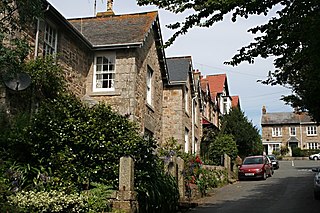
Gulval is a village in the civil parish of Penzance, in Cornwall, England. Although historically a parish in its own right, Gulval was incorporated into the parishes of Ludgvan, Madron and Penzance in 1934, and is now considered to be a suburb of Penzance. Gulval still maintains its status as an ecclesiastical parish and parts of the village church date back to the 12th-century. Together with Heamoor, Gulval still retains its status as an electoral ward. The ward population at the 2011 census was 4,185.
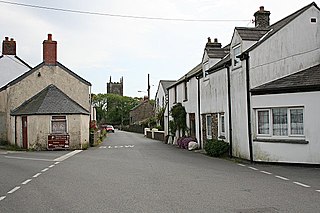
St Newlyn East is a civil parish and village in Cornwall, England, United Kingdom. The village is approximately three miles (5 km) south of Newquay. The name St Newlyn East is locally abbreviated to Newlyn East and according to an anonymous historian writing in The Cornishman in 1880 it was only in recent years that Saint had been added to the parish name.

Menheniot is a civil parish and village in Cornwall, England, United Kingdom. The village is 2+1⁄2 miles (4.0 km) southeast of Liskeard. The meaning of the name is "sanctuary of Neot".

Sir Jonathan Trelawny, 2nd Baronet, of Trelawny in the parish of Pelynt in Cornwall, England, was a Cornish Member of Parliament.

Brigadier-General Henry Trelawny was a British Army officer of Cornish descent, a Member of Parliament and Vice-Admiral of Cornwall.
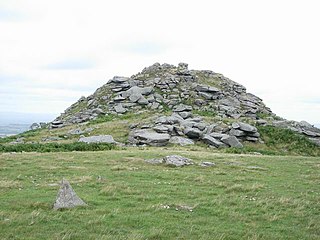
Linkinhorne is a civil parish and village in southeast Cornwall, England, United Kingdom. The village itself is situated at grid reference SX 320 736 and is approximately four miles (6.5 km) northwest of Callington and seven miles (11 km) south of Launceston. The parish population at the 2011 census including Downgate was 1,541

Barcelona is a hamlet in the parish of Pelynt in southeast Cornwall, England, UK.

St Breock is a village and a civil parish in north Cornwall, England, United Kingdom. The spelling St Breoke was also formerly in use.
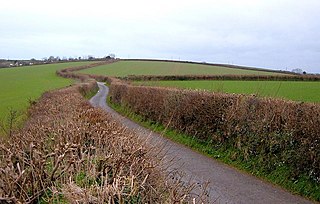
Deviock is a coastal civil parish in south-east Cornwall, England, United Kingdom. It is situated approximately three miles (5 km) west of St Germans and straddles the valley of the River Seaton. The parish includes the settlements of Hessenford, Seaton and Downderry and the population in the 2001 census was 1341, increasing to 1,420 at the 2011 census. The parish occupies an area of 2,108 hectares.

Lansallos is a village in the civil parish of Polperro in south Cornwall, England, United Kingdom. It is situated between Polruan and Polperro about 5 miles (8 km) east of Fowey in Liskeard Registration District.

Morval is a rural civil parish, hamlet and historic manor in southeast Cornwall, England, United Kingdom. The hamlet is approximately two miles (3 km) north of Looe and five miles (8 km) south of Liskeard.

St Martin-by-Looe is a coastal civil parish in south Cornwall, England, United Kingdom. The parish is immediately east of the town and parish of Looe, seven miles (11 km) south of Liskeard. The parish is in the Liskeard Registration District and the population in the 2001 census was 321, which had increased to 429 at the 2011 census.

Trelawne is an historic manor in the parish of Pelynt in Cornwall, England, situated 20 miles (32 km) west of Plymouth, Devon and four miles (6.4 km) west-northwest of Looe, Cornwall. It was long the seat of the Trelawny family, later Trelawny baronets, one of the most eminent of Cornish gentry families, much of whose political power derived from their control of the pocket borough of nearby East Looe. The surviving grade II* listed manor house known as Trelawne House is today used for holiday accommodation and entertainment, under the name "Trelawne Manor Holiday Park".

Harewood House was an ancient manor house, built originally by the Saxons, in Cornwall, England. Harewood Estate is surrounded by old mine workings, so the house faces towards Morwellham Quay.
Trelawny or Trelawney is a habitational surname that originated in Cornwall. The family are said to have descended from Haemlin, who held several manors from Robert, Count of Mortain, according to the Domesday Book.

















